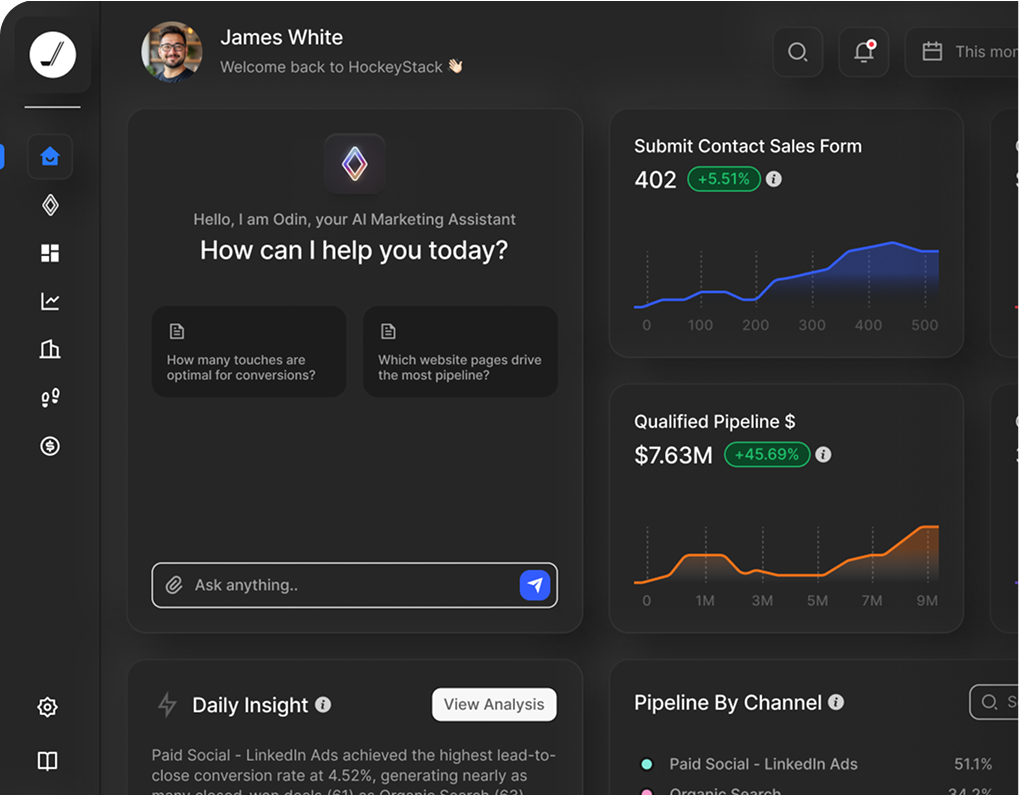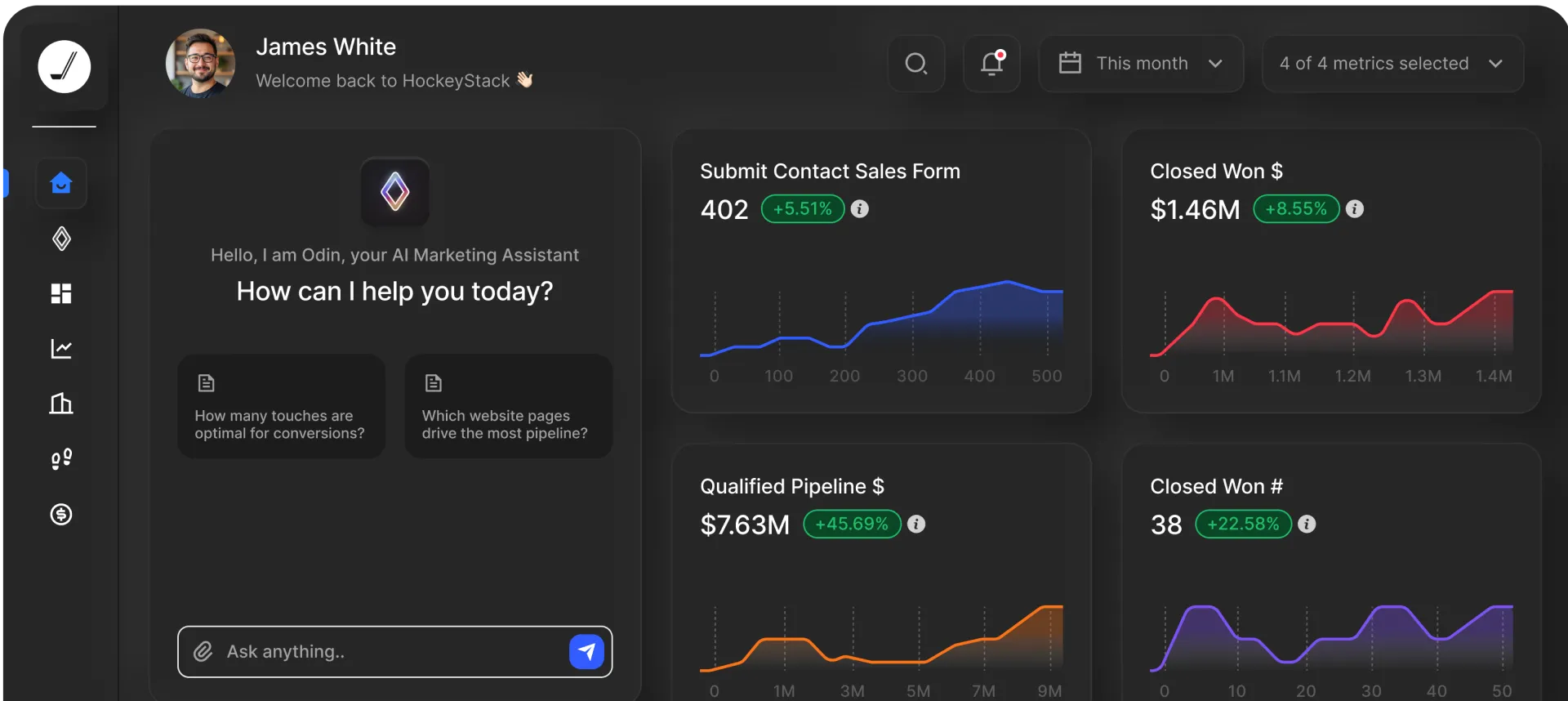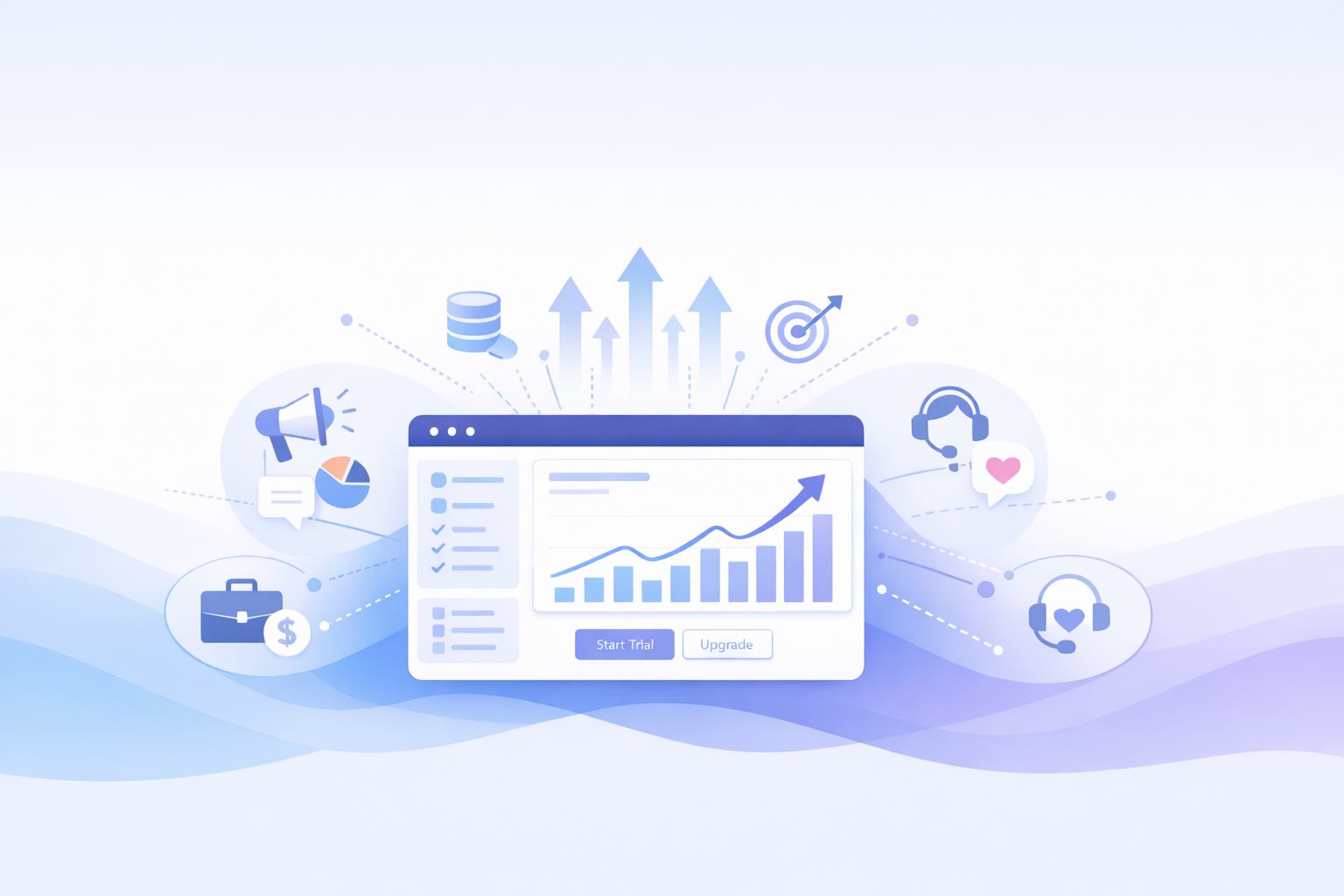The Beginner’s Guide to SaaS Revenue Forecasting + Revenue Template

The Beginner’s Guide to SaaS Revenue Forecasting + Revenue Template

What is Saas Revenue Forecasting?
SaaS revenue forecasting is the revenue a SaaS company expects over a period of time. Revenue forecasting is becoming a critical part of business strategy today. From smaller start-ups to the SaaS giants, all entities are gathering and leveraging insights to determine and streamline the business’s direction early in the process.
However, for this entire effort to work, you need to be able to forecast accurately, so you’re able to take decisions on concrete data, and that’s where most businesses get flaky.
In this article, you will learn:
- Why revenue forecasting is critical for your SaaS company
- The different types of revenue forecasting models
- The best practices you can follow for accurate revenue forecasting
- Challenges you might face during the process
Why do SaaS companies need to forecast revenue?

The SaaS industry is currently growing at an 11.7% CAGR and is expected to reach a $700B market size by the end of this decade. The emergence of smartphones a few decades ago and the current norm of remote-working routines have propelled the demand for and reliance on centrally-hosted platforms.
New SaaS companies are penetrating this market to meet the demand-supply curve which is making the competition here fiercer than ever.
To survive and scale your SaaS business, you need to keep the basics in check, which mainly includes making sure that your revenue and expenses are carefully balanced to maintain profitability in the longer run.
This means that you need to keep track of your top revenue-generating touchpoints, your least performing areas, your customer lifecycle, etc. You also need to keep your performance against business KPIs in check to find areas of improvement. You can do that by tapping into growth metrics like your conversion rate, customer acquisition cost (CAC), and retention rate, among others.
All of that is part of identifying and understanding your business’s current revenues, which can act as the basis of forecasting the future potential of your business.
Once you have access to all these insights about your SaaS, you can leverage revenue forecasting models to predict where the business is headed and what strategies you need to develop to keep yourself relevant in the market.
What are the types of revenue forecasting for SaaS?

The process behind SaaS revenue forecasting is simple. You collect data from your past and current performance and then predict the business’s future based on those numbers.
There are various types of forecasting methods you can follow for your SaaS business. We’ve discussed a few of the most relevant ones here.
Straight-line method
If you want a simple technique for forecasting SaaS revenue then the straight-line method is the one for you. All you need in this is basic math skills to make reasonable estimates for the business’ future financial situations.
As it goes with typical forecasting, you will need historical data to evaluate the former revenue growth rate and then assume the rate for the next 3-5 years.
Let’s say that your company growth followed a pattern of 7% over three years. In this time, the variables affecting your revenue generation were limited. Keeping in mind that there aren’t too many variables, you can assume your next revenue growth to be linear.
However, that can only be possible in a perfect world. Now, changes are consistent which means revenue generation and net profit is both affected. So, what does the straight-line method have to do with this? It’s simple; you can use this method to evaluate expectations with your company and set the appropriate budgets.
Moving averages
Data analysis depends on several different metrics. However, when forecasting SaaS revenue using the moving averages method, you’ll need to analyse the average performance of a specific metric. This is done in a specified time – commonly used for a monthly time frame rather than annual.
For example, let’s say you want to track your sales meetings. Through this, you will be able to evaluate your sales teams’ performance and how many meetings they carry out. That means, you would have to track your average meetings and the meetings carried out per lead. By dividing your metrics into different sections, you can easily track different parts of the meeting values. A great example would be this:

Why do you use it?
Well, companies use this method to evaluate profits, revenue, sales growth, and other financial metrics. This will eventually allow you to point out where the revenue fluctuations are and what improvements you can make to enhance your revenue forecast.
Forecasting using ARR
ARR is the measure for the recurring revenue generated in a year. This is a metric important in understanding the company’s standpoint and forecasting SaaS revenue.
Companies use Monthly Recurring Revenue (MRR) and ARR on the basis of the longevity of contracts. For example, if your organisation has monthly contracts then forecasting on the basis of MRR is the right approach for you.
For SaaS revenue forecasting on the basis of ARR, there are two methodologies used:
- Bottom-up ARR
- Top-down ARR
Before we dive into these, let’s take some time to look into the momentum ARR table, which essentially is the process that both these methodologies take. There are four components of the table:
- New ARR – this determines the new customers taken onboard during the month and how they will contribute to an increase in ARR
- Expansion ARR – factors such as product upgrade, and price and upselling or cross-selling which determines the growth of ARR from existing customers and how it will cause an increase in ARR
- Churn ARR – Monthly churned customers and how it causes a loss in ARR
- Contraction ARR – loss of existing customers in a specified time and how it causes a decrease in ARR.
Each of these factors should be forecasted separately in order to get the ARR forecast for the company. In essence, they show how companies have progressed, or regressed, over the year and evaluate the revenue predicted for the upcoming years.

But is measuring the ARR enough for SaaS revenue forecasting?
It isn’t.
The important step is to translate the ARR forecast into the company’s revenue statement. ARR simply gives you the prediction for a certain point in time. Let’s start with one of the ARR forecast approaches:
- The forecasted revenue for a given month / 12
What’s wrong here?
In practice, nothing. However, when a customer signs a contract, then the factors from the ARR momentum table above will impact the month’s revenue generation. To explain it better, let’s say that you have a customer who signed the contract in the beginning of the month and another that signed in the mid of the month. Here, time is of the essence. The revenue generated by the former customer will be higher than the latter.
In the equation mentioned above, that is not taken into consideration.
- Revenue forecast in the beginning of the month/12
In the equation above, the missing piece was the time. This equation addresses that issue and provides a much more accurate forecasted ARR.
10 Best Practices for SaaS Revenue Forecasting
Wondering what are the best ways for forecasting SaaS revenue? Here are some best practices you can follow:
- Leverage historical data: If past performance is available, you can analyze that data to make future forecasts. For instance, the previous ARR can be a great benchmark for future ARR.
- Focus on all opportunities: One of the things people do wrong is they only focus on the ‘closed won’ deals. Instead, what you need to do is evaluate the entire opportunities funnel. Through this, you can get an idea of where you are and the circumstances that led you to this position.
- Analyse marketing and sales performance: Accuracy of forecasts depends on the understanding you have of your department’s performance and the targets achieved.
- Forecasts and management go hand-in-hand: When you integrate them together, it’ll be easier to fit them into the sales cycles.
- Tracking sales pipeline: This can help you identify the revenue you can expect to generate over your existing ARR.
- Tracking lost deals: This can help you understand why you lost them and ensure those problems are listed in your forecast.
- Track economic conditions: Forecasts are impacted by economic conditions which is why you should keep a close eye on market trends and down/upturns.
- Incentivize: Provide variable sales bonuses to incentivize forecasts.
- Track company’s churn rate: What is your company’s churn rate? When you analyse your ARR with the previous year’s churn rate, you will understand its impact on the future revenues. You should adjust the overall revenue generated from contract renewals with the churn rate to get a better estimation.
- Finally, and most importantly, maintain consistency in accurate data. By keeping a track of the records, you can understand the steps and positions your business has been in throughout the past year.
Challenges of SaaS Revenue Forecasting
Where there are predictions, there is room for error. You can spend a significant amount of money, hire the best data analysts, and evaluate extensive data and still have errors in predictions.
However, most of the time, challenges faced by companies are due to the lack of knowledge. Perhaps there’s something you’re doing wrong. Three of the key challenges that are often posed are:
#1 Limited access to historical data
SaaS companies deal with significant volumes of data from different platforms. However, at times, historical data is either not tracked at all or not stored. If you do not use proper analytics tools that can track data retroactively, you run the risk of incorrect analytics and forecasting.
#2 Scattered data
Speaking of inadequate access to data, another challenge is that the data used for SaaS analytics is scattered. If you are to evaluate the data and use it to predict the future of your company, you cannot invest hours in analysing data scattered across different tools or platforms.
Predictions about the future of your company should not be driven by intuition. The more data you collect and consolidate on one dashboard, the better your chances of accurately predicting future revenue for your SaaS.
#3 Lack of communication among teams
Lack of proper communication between internal teams has always been among the most critical barriers in SaaS teams. In fact, Inc. suggests that poor communication results in a loss of $62.4M annually in productivity.
Let’s explain that with the help of an example: let’s assume that your sales team gather insights from various product touchpoints to realize that customers need visual aids to analyse data that your tool consolidates in its one-window solution. This is critical information for the back-end developers who need to revise multiple lines of codes to get the visual aids live.
This information is also critical for the management which will decide what type of visual aid (graphs, infographics, etc.) will best fit your SaaS product’s layout.
If your sales team is unable to share this valuable insight with relevant internal teams and managers, it will have a direct (and potentially catastrophic) impact on your product’s revenue down the road due to a potential loss of market share.
The same problem will persist if the sales team shares this information with the decision-maker or the developers one at a time. That’s valuable time lost which can cost potential conversions in this hyperactive SaaS space.
An ideal solution would be a one-stop-solution with consolidated information from all teams, allowing everyone access to the same information in real time. This will enable swift decision-making, shorten reaction time, and increase your chances of retaining your customer-base.
Your marketing team focuses on developing, executing, and evaluating strategies which then help the sales team to get leads. Similarly, your analysis team will use historical data to analyse the next steps to take in order to efficiently benefit the company.
If your marketing team does not collaborate with the analysis team to figure out improvements that could be made to previous campaigns or content then they will not be able to enhance their strategies.
Lack of team communication is a significant factor that could disrupt future predictions.
Other challenges you might face while forecasting revenue
- A sudden change in governmental regulations or guidelines can affect operations
- Unforeseen fluctuations in product’s demand due to an unidentifiable issue
Track Your Revenue Better with HockeyStack
SaaS revenue forecasting is an extensive process that requires you to use the best analytical tools available. As an end-to-end analytics and attribution tool. HockeyStack allows businesses to understand the state of their revenue without the use of complex codes.
When forecasting SaaS revenue, you can use HockeyStack’s analytics tools to understand your company’s revenue journey from a specified time, and use those results to predict your future sales.
FAQs
How do you forecast SaaS revenue?
SaaS revenue forecasting is essentially done by evaluating economic trends, historical sales data, market trends, and more. Accurate forecasting can be done through several different methods chosen according to each company’s requirement.
How long does it take SaaS to be profitable?
You need 12-18 months to reach the point of positive cash flow. Within 3-6 years you will be able to further improve your profitability. In 9-10 years, your company will reach significant growth.
Introducing Odin in Slack: Your AI Analyst, Right Where You Work
Get instant answers on pipeline, campaigns, and GTM gaps. Just tag @hockeystackodin and go from question to action—right where you work.


Ready to see HockeyStack in action?
HockeyStack turns all of your online and offline GTM data into visual buyer journeys and dashboards, AI-powered recommendations, and the industry’s best-performing account and lead scoring.

Ready to See HockeyStack in Action?
HockeyStack turns all of your online and offline GTM data into visual buyer journeys and dashboards, AI-powered recommendations, and the industry’s best-performing account and lead scoring.



